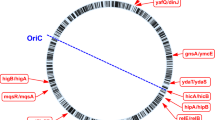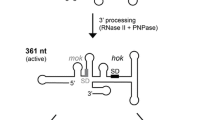Abstract
Bistable switch-like behavior is a ubiquitous feature of gene regulatory networks with decision-making capabilities. Type II toxin-antitoxin (TA) systems are hypothesized to facilitate a bistable switch in toxin concentration that influences the dormancy transition in persister cells. However, a series of recent retractions has raised fundamental questions concerning the exact mechanism of toxin propagation in persister cells and the relationship between type II TA systems and cellular dormancy. Through a careful modeling search, we identify how sp: bistablilty can emerge in type II TA systems by systematically modifying a basic model for the RelBE system with other common biological mechanisms. Our systematic search uncovers a new combination of mechanisms influencing bistability in type II TA systems and explores how toxin bistability emerges through synergistic interactions between paired type II TA systems. Our analysis also illustrates how Descartes’ rule of signs and the resultant can be used as a powerful delineator of bistability in mathematical systems regardless of application.

























Similar content being viewed by others
Notes
The resultant is defined as the determinant of the Sylvester Matrix, which is built from the coefficients of two polynomials of any degree. The resultant is proportional to the product of the difference of the two polynomial’s roots. In particular, the resultant is zero if and only if the two polynomials share a common root. This fact can be exploited to search for double roots of a polynomial and reduce a system of n polynomials in n unknowns to a single polynomial in one variable. The resultant is a useful, but little-known tool for nonlinear ODE model analysis. Additionally the resultant can be easily computed using a computer algebra system like Maple.
The entries of the Sylvester Matrix are the coefficients of the two polynomials. In this case, we have two polynomials in T and A, so we could build two different matrices from the coefficients of either A or T. The phrase “with respect to A” indicates that the entries of the Sylvester Matrix are based on the coefficients of A rather than T, and T is treated as a coefficient of the polynomial in A.
References
Afif H, Allali N, Couturier M, Van Melderen L (2001) The ratio between CcdA and CcdB modulates the transcriptional repression of the ccd poison–antidote system. Mol Microbiol 41(1):73–82. https://doi.org/10.1046/j.1365-2958.2001.02492.x
Bukowski M, Rojowska A, Wladyka B (2011) Prokaryotic toxin–antitoxin systems—the role in bacterial physiology and application in molecular biology. Acta Biochim Pol 58(1):1–9
Cataudella I, Sneppen K, Gerdes K, Mitarai N (2013) Conditional cooperativity of toxin-antitoxin regulation can mediate bistability between growth and dormancy. PLoS Comput Biol 9(8):e1003174. https://doi.org/10.1371/journal.pcbi.1003174
Fasani RA, Savageau MA (2015) Unrelated toxin–antitoxin systems cooperate to induce persistence. J R Soc Interface 12(108):20150130. https://doi.org/10.1098/rsif.2015.0130
FitzGerald CE, Keener JP (2021) The PafBC-mediated response sensitizes a bistable DNA damage response in Mycobacteria. J Theor Biol 508:110462. https://doi.org/10.1016/j.jtbi.2020.110462
Fraikin N, Rousseau CJ, Goeders N, Van Melderen L (2019) Reassessing the role of the type II MqsRA toxin–antitoxin system in stress response and biofilm formation: MqsA is transcriptionally uncoupled from mqsR. mBio 10(6):1–13. https://doi.org/10.1128/mBio.02678-19
Garcia-Pino A, Balasubramanian S, Wyns L, Gazit E, De Greve H, Magnuson RD, Charlier D, van Nuland NA, Loris R (2010) Allostery and intrinsic disorder mediate transcription regulation by conditional cooperativity. Cell 142(1):101–111. https://doi.org/10.1016/j.cell.2010.05.039
Germain E, Roghanian M, Gerdes K, Maisonneuve E (2019) Retraction: Stochastic induction of persister cells by HipA through (p)ppGpp-mediated activation of mRNA endonucleases (Proceedings of the National Academy of Sciences of the United States of America (2015) 112 (51715176) https://doi.org/10.1073/pnas.1423536112). Proc Natl Acad Sci USA 166(22):11077. https://doi.org/10.1073/pnas.1906160116
Goormaghtigh F, Fraikin N, Putrin M, Hallaert T, Hauryliuk V, Garcia-Pino A, Sjdin A, Kasvandik S, Udekwu K, Tenson T, Kaldalu N, Van Melderen L (2018) Reassessing the role of type II toxin–antitoxin systems in formation of Escherichia coli type II persister cells. mBio 9(3):1–14. https://doi.org/10.1128/mBio.00640-18
Graham TG, Tabei SM, Dinner AR, Rebay I (2010) Modeling bistable cell-fate choices in the Drosophila eye: qualitative and quantitative perspectives. Development 137(14):2265–2278. https://doi.org/10.1242/dev.044826
Harms A, Brodersen DE, Mitarai N, Gerdes K (2018) Toxins, targets, and triggers: an overview of toxin–antitoxin biology. Mol Cell 70(5):768–784. https://doi.org/10.1016/j.molcel.2018.01.003
Harms A, Fino C, Sørensen MA, Semsey S, Gerdes K (2017) Prophages and growth dynamics confound experimental results with antibiotic-tolerant persister cells. mBio 8(6):1–18. https://doi.org/10.1128/mBio.01964-17
Lou C, Li Z, Ouyang Q (2008) A molecular model for persister in E. coli. J Theor Biol 255(2):205–209
Maisonneuve E, Castro-camargo M, Gerdes K (2018a) Retraction Notice to: (p) ppGpp controls bacterial persistence by stochastic induction of toxin–antitoxin activity, vol 1. https://www.cell.com/abstract/S0092-8674(13)00958-6
Maisonneuve E, Shakespeare LJ, Girke M (2018b) Retraction: Bacterial persistence by RNA endonucleases (Proceedings of the National Academy of Sciences of the United States of America (2011) 108 (13206-13211 10.1073/pnas.1100186108) Proc Natl Acad Sci USA. 115:E2901. https://doi.org/10.1073/pnas.1803278115
Overgaard M, Borch J, Jørgensen MG, Gerdes K (2008) Messenger RNA interferase RelE controls relBE transcription by conditional cooperativity. Mol Microbiol 69(4):841–857. https://doi.org/10.1111/j.1365-2958.2008.06313.x
Puszyński K, Hat B, Lipniacki T (2008) Oscillations and bistability in the stochastic model of p53 regulation. J Theor Biol 254(2):452–465. https://doi.org/10.1016/j.jtbi.2008.05.039
Ramisetty BCM (2020) Regulation of type II toxin–antitoxin systems: the translation-responsive model. Front Microbiol 11:1–6. https://doi.org/10.3389/fmicb.2020.00895
Smolen P, Baxter DA, Byrne JH (2019) How can memories last for days, years, or a lifetime? Proposed mechanisms for maintaining synaptic potentiation and memory. Learn Mem 26:1–59. https://doi.org/10.1101/lm.049395.119.Freely
Unterholzner SJ, Poppenberger B, Rozhon W (2013) Toxin–antitoxin systems. Mob Genet Elem 3(5): https://doi.org/10.4161/mge.26219
Author information
Authors and Affiliations
Corresponding author
Additional information
Publisher's Note
Springer Nature remains neutral with regard to jurisdictional claims in published maps and institutional affiliations.
Appendix
Appendix
Consider a variant of the model presented in Sect. 2.3.1 in which mRNA is degraded by the first complex, \(C_1\). The model has the following form:

The steady-state equations for the system (73)–(78) can be reduced to two polynomials equations in T and A, which we denote as \(n_1(T,A)\) and \(n_2(T,A)\). \(n_1(T,A)\) has the following form:
and \(n_2(T,A)\) has the form
The resultant of \(n_1(T,A)\) and \(n_2(T,A)\) with respectFootnote 2 to A is a polynomial in T with the form:
Using a Descartes Rule of Signs argument, we can see that this model variant cannot exhibit bistable switch-like behavior for any positive parameter set.
A note on software
It should be noted that XPP AUTO was used to create the bifurcation diagrams presented in this paper We used Ting-Hao Hsu’s Matlab interface for plotting the diagrams (available at math.pitt.edu/ bard/xpp/xpp.html).
Rights and permissions
About this article
Cite this article
FitzGerald, C.E., Keener, J.P. A systematic search for switch-like behavior in type II toxin–antitoxin systems. J. Math. Biol. 82, 60 (2021). https://doi.org/10.1007/s00285-021-01608-z
Received:
Revised:
Accepted:
Published:
DOI: https://doi.org/10.1007/s00285-021-01608-z
Keywords
- Toxin–antitoxin systems
- Type II toxin–antitoxin systems
- Bistability
- Switches
- Mathematical modeling
- Resultant
- Resultant analysis
- Synergy
- Cross-talk




